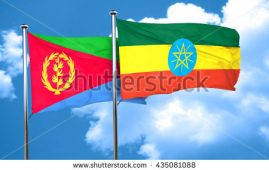The weeks-long protests in Ethiopia’s largest region Oromia slid into a security crisis costing the lives of civilians and officers. The federal government issued a statement.
Students and locals at several dozen locations in Oromia since mid-November. Until last Thursday, at least five lost their lives, as police clashed with the protesters that have been largely peaceful. The death toll has risen since.
The draft plan for integrated development of the capital Addis Ababa and its surrounding Oromia towns was the rallying cry of the protests. Activists believe it will entail massive displacement of Oromo farmers. The draft plan, popularly referred to as “the master plan,” was put in the back-burner after the deadly 2014 protests, yet protestors suspect it was being implemented covertly.
The central and western parts of the region have been the epicenter of the protests that covered most of the zones of the region as well as universities.
Security deteriorated at localities in West Shewa and South West Shewa zones, as people from surrounding rural towns and kebeles joined protests in Woreda towns and roadside towns. Two main roads passing through the zones have been disrupted for hours in several days in late last week.
The perception of a power vacuum appears to have emboldened groups in Ameya, Ginde Beret, Jeldu, and Wenchi woredas into chasing away the local administrators. Police and militiamen had either handed over their arms or fled the vicinities, as of late last week. Locals told HornAffairs, two federal police officers were killed in the area between Woliso and Chitu, last Friday.
A contingent from the regular army was dispatched into the areas by the end of last week to reinforce the regional anti-riot force and federal police. Regardless, the crisis spiraled into a communal clash in one area by the weekend, while ransacking of government and private properties was reported in other areas.
The federal government claimed “groups with proven anti-peace and anti-peace agenda” masterminded the crisis.” The statement issued by the Anti-terrorism Task-force today acknowledged the military is taking part. It also warned “the legal and proportional measure against the terror and insurrectional force” will continue.
The involvement of the army and the statement from the anti-terror taskforce indicates the situation is being treated as a federal security problem.
The major opposition coalition Medrek claimed 32 people were killed in the past four weeks.

**********
Previous reports:
* Woliso, A day at a hotspot of Oromo Protests
* Death toll rises to 5 as protests in Oromia mark third week
* At least three dead as protests continue in Oromia
* University students injured as protests rock Oromia region





